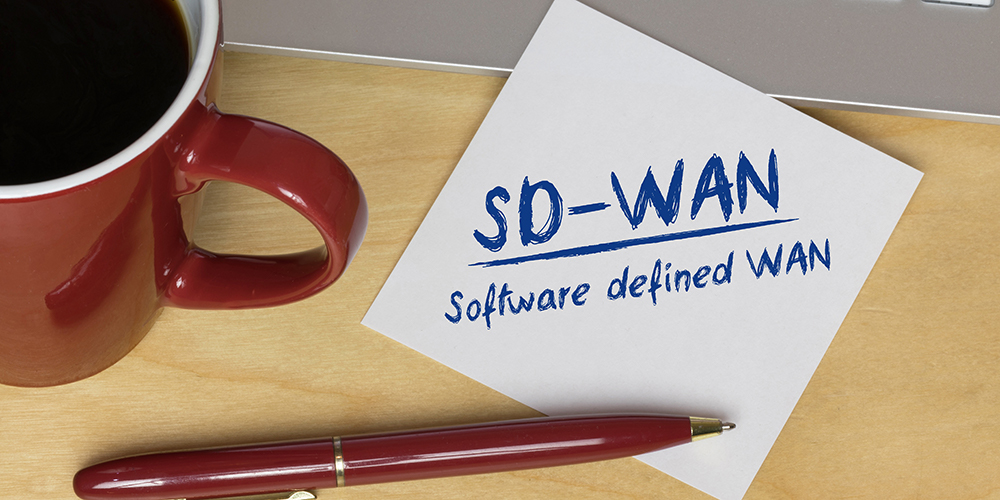
Apr 8, 2024 | SMB Technology, SMB Technology, SMB Technology, SMB Technology, Technology News
n the last several years, remote and hybrid work environments have become common. Many offices have at least a partially remote workforce, and this calls for communications applications that are always on and helping workers to collaborate effectively. To learn about leveraging software-defined wide area networks for seamless communication, read on. What SD-WAN and Why it Matters With remote and hybrid work more common, and teams using popular platforms, seamless Internet connectivity, stability and reliability are essential. Software-defined wide area networking, or SD-WAN, is a cloud-based approach to WAN management that brings together multiple providers to offer the connectivity needed. The infrastructure is in the cloud, eliminating the need for customers to manage and maintain their own. All they need is an internet connection and an appliance at each connection point (remote office). Additional appliances can be added as needed. SD-WAN uses multiple transports including business-class broadband and networking as well as MPLS already used in WANs, to route traffic effectively for a hybrid workforce. Software-Defined Wide Area Network offers numerous benefits. First, it reduces capital expense by eliminating the need for companies to maintain on-premise infrastructure. Operational expense is decreased by reducing the need for IT professionals to make trips out to fix problems. Instead, monitoring and troubleshooting is centralized. Like the cloud in general. SD-WAN is scalable, with devices easily added to the network. And by using multiple providers, data is moved reliably to where it’s needed as a result of increased bandwidth. Security Considerations in SD-WAN Readers might be wondering about security. How can so much data in transit be protected?...

Nov 7, 2017 | SMB Technology, SMB Technology, SMB Technology, SMB Technology, Technology News
According to technology research firm Gartner Group, technology spending is expected to grow to $3.7 Trillion dollars in 2018. Communications Services ($1.387 billion) and IT Services ($931 billion) make up the majority of spending. In contrast, Enterprise Software and Data Center Systems are the smallest categories of spending expected for next year. Shifts in IT spending from Data Centric to Cloud Computing change the landscape for buyers, vendors and technology solution providers alike. Here are top Technology Trends you will hear about in 2018. Cybersecurity 2017 was a year full of data breaches and ransomware. According to a 2017 Cost of Data Breach Study by the Ponemon institute, the average cost of a data breach in 2017 was $141 per record lost. Consider how many customer, prospect, employee, member or supplier records you may have within your organization. With the risks so high, expect Cybersecurity to be top of the list of Technology Trends for most companies next year. Cloud Computing According to Forbes, 80% of IT budgets will be committed to the Cloud. Software as a Service (SaaS) solutions will help line-of-business managers from Sales, Marketing, HR and Finance become more productive. Communications and Collaboration applications including Email, VoIP and Web conferencing solutions will connect employees across companies and supply chains. Infrastructure as a Service (IaaS) will host a range of solutions including websites, online backup and more. The utility model, or paying for usage, appeals to businesses replacing technology capital expense (CapEx) for subscription-based operating expense. Managed Services As the “everything as a service” model gains in popularity, more companies will adopt fixed- priced managed services contracts....
Sep 12, 2017 | SMB Technology, Technology News
Recent Hurricanes Harvey and Irma, along with major earthquakes in Mexico, remind us how vulnerable we can be to disasters, and underscore the importance of data protection. As businesses depend on access to a range of systems–including call center, communications and collaboration application, customer management, and more–having a solid data protection plan can help you in a disaster recovery scenario. Now more than ever, a range of options exist to help maintain business continuity. Here are a few options to consider. Review Your Data Protection Plan Key to your data protection plan is identification of mission-critical systems. The most important systems should be redundant, with the ability for failover in the event of a disaster. Your data centers and failover options should be geographically dispersed and on different network backbones. This can minimize downtime and get you back up and running sooner. Having your data backup available in Cloud Storage can help you recover other important files and application data if you lose access to your on-premise systems. SD-WAN for Business Continuity Software-defined wide area networks (SD-WAN) can also provide you a highly reliable and redundant network. Having the ability to switch Wide Area Networks using SD-WAN as an alternative to more costly MPLS solutions can ensure connectivity during a natural disaster. What’s more, Software-Defined Wide Area Networking can save you money in the long run by giving you the flexibility of a multi-carrier solution. Software as a Service for Disaster Recovery More businesses are turning to the Cloud for a range of applications–hosted email, Voice over IP (VoIP), Call Center, and others–to keep communications flowing during a...
Aug 10, 2017 | SMB Technology, Technology News
Your network is the backbone of your IT Infrastructure. Your network health is also an integral part of your defense against Cyber threat. Cloud Computing, Communications and Collaboration, Data Protection, and Digital Transformation put more reliance on your network. This begs the question, how is your network health? Ask yourself these three questions to find out the answer… How Well Does Your Network Perform? You rely on your network to communicate with your employees, customers, prospects, and suppliers. What’s more, your network links your company to public and private cloud services and applications that are critical to your business operations. Performance bottlenecks from social media, streaming applications, faulty hardware, and lost connections can impact your employees’ productivity. Offsite backup and other IT functions also rely on your network. Ensuring network health keeps systems running smoothly and available when you need them. How Secure is Your Network? Network security is an imperative for businesses of all sizes. Your business may face additional compliance requirements–for example, Payment Card Industry Data Security Standard (PCI DSS). Data protections standards are rapidly evolving, which could increase your responsibility and exposure to fines and penalties. General Data Protection Regulation (GDPR), the European Union’s data protection rules, could apply to your business regardless of your location. Keeping your network in compliance through monitoring, endpoint protection, content filtering, and other network security detection and protection technologies is a good start. Train your employees on the implications of phishing emails and how to identify one. Teach them to avoid malicious links in unsolicited scam emails. Underscore the importance of a strong password and steps to take to keep...
Jun 14, 2017 | SMB Technology, SMB Technology, SMB Technology, Technology News
Many businesses turn to technology to find ways to reduce costs and overhead. Technology trends–Software as a Service, Internet of Things, Software Defined Wide Area Networking, marketing automation, and Cloud-based communications and collaboration–are top of mind with business owners who prioritize improving staff productivity and capability, and reaching new customer segments. Here are three technology trends to take advantage of to drive business outcomes. Software as a Service One of the more popular ways to access Cloud Computing is Software as a Service. To start reducing costs and improving employee productivity, first consider your Communications & Collaborations applications(email, chat, instant messaging, voice, audio, web and video conferencing). In addition, applications including marketing automation and call center applications are available as Cloud services to help businesses grow their top line by reaching new customers. Software Defined Wide Area Networking Companies are adopting Software Defined Wide Area Networking (SD-WAN) as an alternative to more expensive wide area networking infrastructure. SD-WAN can optimize performance of multiple providers of business-class Internet to match costly alternatives. This saves money while improving performance between your locations and ensuring consistent access to Cloud Services. Internet of Things Enhancements to the Internet, combined with low-cost sensors, and wireless connectivity allow businesses to connect, monitor and automate a wide range of devices. Smart metering can track consumption of energy, water and gas, provide insights into usage, and remotely control a wide range of equipment and machinery. Not only does IoT save costs, the data collected from these devices can also be used gain insights that improve business outcomes. Many technologies are at our fingertips to help businesses maintain...




